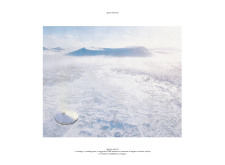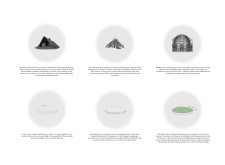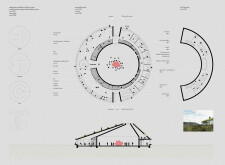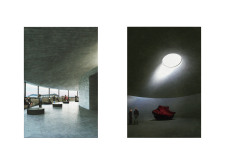5 key facts about this project
The museum features a circular layout that enhances visitor engagement and allows for comprehensive views of its surroundings. Functionally, the building includes multipurpose exhibition spaces capable of accommodating diverse displays and programs, visitor amenities such as a restaurant and gift shop, and administrative offices. The thoughtful organization of these spaces promotes accessibility while ensuring that operational needs are met.
Unique Design Features
The Igneous Museum showcases innovative design principles through its slanted roof, which mirrors the shape of volcanic formations and provides an observation area for guests. Integrating slanted planes into the roof facilitates natural light penetration, enhancing the spatial experience internally and creating dynamic shadow patterns. This architectural feature not only serves an aesthetic purpose but also emphasizes the geological context by drawing connections to the landscape.
Additionally, the museum’s use of traditional materials such as stone, earth, concrete, and glass reflects both sustainability and regional architectural heritage. The incorporation of natural elements pays homage to traditional Icelandic turf houses while adapting these forms to modern structural standards. This synthesis aligns the museum’s design with its educational goals by illustrating the natural and cultural narratives of the region.
Spatial and Functional Organization
The spatial layout of the museum is deliberately arranged to promote interaction and flow. The ground floor functions as the primary visitor area, integrating flexible exhibition spaces with social amenities. The first floor provides administrative and meeting areas, ensuring that operational functions do not detract from the visitor experience. Each space is designed to encourage engagement, both with the exhibits and with the surrounding environment.
Visitors can explore the relationship between geological processes and human activity through thoughtfully curated exhibitions. Overall, the Igneous Museum presents a model of modern architecture that respects its landscape while fulfilling its role as a space for learning and cultural exchange. For further insights into the architectural plans, sections, designs, and ideas that underpin this project, readers are encouraged to explore the project's presentation in detail.


























